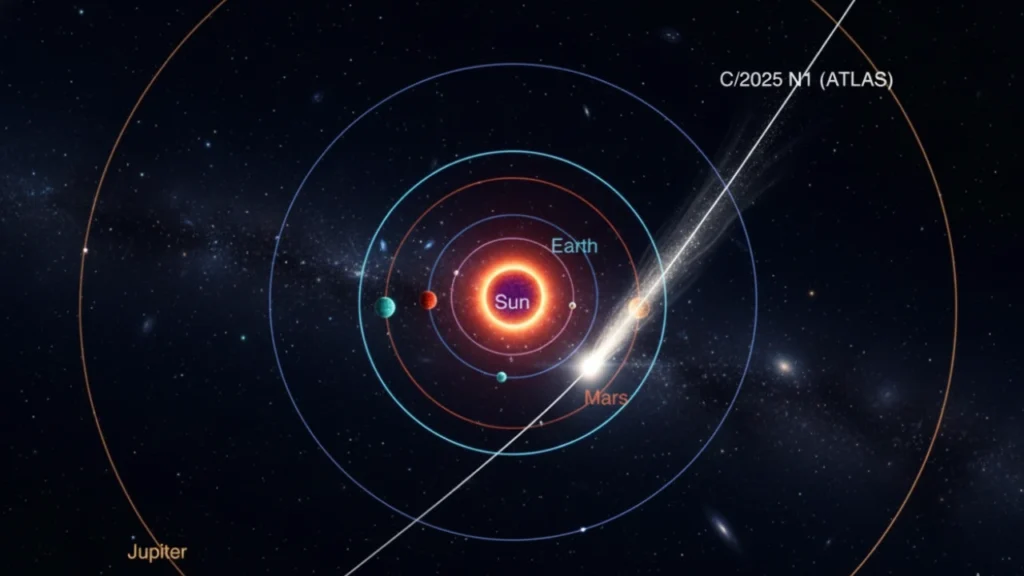
There are moments when the universe lifts a corner of its veil and lets us witness something extraordinary. Interstellar comet 3I/ATLAS is one of those moments. A visitor from a distant star system, wandering through our cosmic neighborhood for the very first and very last time. It has already brushed past the Sun and is now racing back into the darkness between the stars, fading a little more with every hour. And still, anyone on Earth can watch it through a free online telescope, without any advanced instruments or observatory domes. Just a quiet connection between a human being and the great night sky.
Here’s what makes this traveler different from every familiar comet we usually see. Most comets are residents of our own Solar System, circling the Sun again and again, returning after years or centuries. Halley’s Comet returns every 76 years. Others wander along long looping paths from the farthest edges of the Oort Cloud. But 3I/ATLAS does not belong here. It was born around another star entirely, somewhere far beyond our reach, and it will never circle back again. It is an interstellar object, a rare messenger from another solar system passing through on a single silent crossing.
In all of human history, we have only identified two such visitors before: ʻOumuamua in 2017 and Borisov in 2019. Now, the 3I ATLAS interstellar object becomes the third name etched into that astonishingly short list. Astronomers first detected it on July 1, 2025, using the ATLAS survey telescope in Chile. Almost immediately, it became clear that this was no ordinary comet. The 3I ATLAS interstellar object moves far faster than typical comets, and its hyperbolic orbit proves that it is not bound by the gravity of our Sun. Unlike objects that loop and return, this one has no leash. It reached its closest point to the Sun on October 29, 2025, and from that moment on, it has been accelerating outward, escaping the Solar System forever.
Why is the 3I ATLAS interstellar object so important?
NASA and scientists around the world believe that this comet may harbor the original, first-formed material, formed around another star. Its frozen ice may hold secrets that could help us understand how planets are born, how solar systems begin, and whether the chemistry that sparked life is unique to our Earth, or whether the entire universe carries it within.
Scientists are closely observing 3I ATLAS’s particles, the nature of its dust and gases, and its glowing flame-like coma and tail, created by the sun’s wind. Watching it is like trying to hear a faint voice from a distant, unknown star. As if the universe is speaking to us—just softly, very softly.
And for those who wonder whether this comet poses any risk to Earth, the answer is simple. Absolutely not. It is only a few hundred meters across and unimaginably far away. Its orbit doesn’t come near Earth, and it never will. Fast-moving objects in space often raise fear, but in this case, there is nothing to worry about. It is passing quietly, touching nothing, harming nothing.
Through the livestream, you can watch 3I/ATLAS shrink into the darkness, knowing that no one alive today will ever see it again. It will never return. Once it leaves, it leaves forever.



